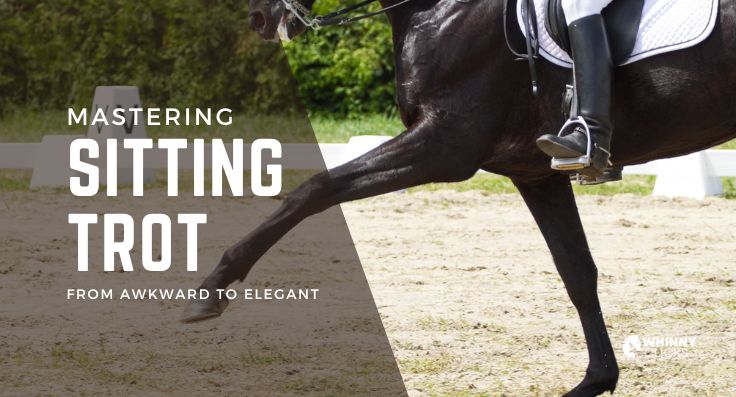5 Simple Tips to Transform Your Sitting Trot from Awkward to Elegant
Riding a horse in a sitting trot can be a challenging and uncomfortable experience for many riders, especially those who are new to the discipline. However, with proper technique and training, it is possible to improve your sitting trot and make it a more enjoyable and effective way of riding. Here are some tips on how to improve your sitting trot.
Use Your Core Muscles to Stay Balanced
To sit the trot on a dressage horse, you should use your core muscles to maintain balance and stability in the saddle. This involves engaging your abdominal muscles and maintaining a straight, upright posture. To do this, try to keep your hips level, and your shoulders square with the horse’s movements. As the horse trots, use your core muscles to follow the horse’s motion and maintain a steady seat. It’s also important to maintain a soft, flexible connection with the horse’s mouth through the reins to allow for smooth, balanced movement.
Use Your Legs to Support Your Seat
In a sitting trot, your legs should be used to support your seat rather than to push yourself out of the saddle. To do this, slightly bend your knees and keep your heels down. This will help you stay in the saddle and follow your horse’s movement more easily. It can also be helpful to think about pushing down through your heels, rather than gripping with your legs, to encourage a relaxed, balanced seat.
Use Your Reins to Maintain Contact With the Horse’s Mouth
In a sitting trot, it is important to maintain contact with your horse’s mouth to help him move forward and maintain his rhythm. Use light, steady contact on the reins, and avoid pulling back or using too much force.
In a recent Carl Hester Masterclass, Carl mentioned keeping your fingers closed on the reins at all times to ensure you give and take and are not “hanging” on the horse’s mouth.
Get Unlimited Featured Ads for Only $6.95
Perfect for selling 1 horse, or 20!
Advertise your horse on WhinnyClicks and start connecting with potential buyers today! With our user-friendly platform and helpful resources, selling your horse has never been easier. Sign up now and take the first step toward finding the right buyer for your equine companion.
$6.95 unlimited offer only available for a limited time
Practice Trotting Without Stirrups
One of the best ways to improve your sitting trot is to practice trotting without stirrups. This will help you develop a stronger seat and better balance, which will make it easier to maintain your position in the saddle during a sitting trot.
To practice sitting trot without stirrups, start by warming up at the walk and trot with stirrups to loosen up your muscles and prepare for the added challenge of riding without stirrups. Then, when you’re ready to begin practicing the trot without stirrups, start by trotting on a straight line, using your core muscles to maintain balance and stability in the saddle. As you become more comfortable, try trotting on a circle or in a figure-eight pattern, using your upper body and core muscles to maintain balance and a steady seat.
Work On Your Posture
Good posture is essential for riding in a sitting trot. Keep your shoulders back, your back straight, and your head up to maintain a balanced and centered position in the saddle. This will help you stay aligned with your horse’s movement and maintain your balance.
By following these tips, you can improve your sitting trot and make it a more comfortable and effective way of riding. With time and practice, you will be able to ride in a sitting trot with ease and confidence.
Conclusion
In conclusion, sitting the trot on a horse involves using your core muscles to maintain balance and stability in the saddle. This involves engaging your abdominal muscles and maintaining a straight, upright posture. To do this, keep your hips level and your shoulders square with the horse’s movements and maintain a soft, flexible connection with the horse’s mouth through the reins. By practicing the trot in a balanced, independent seat, you can improve your ability to sit the trot without gripping with your legs. With time and practice, you should be able to sit the trot comfortably and confidently, allowing you to enjoy the smooth, rhythmic motion of the horse’s gait.



